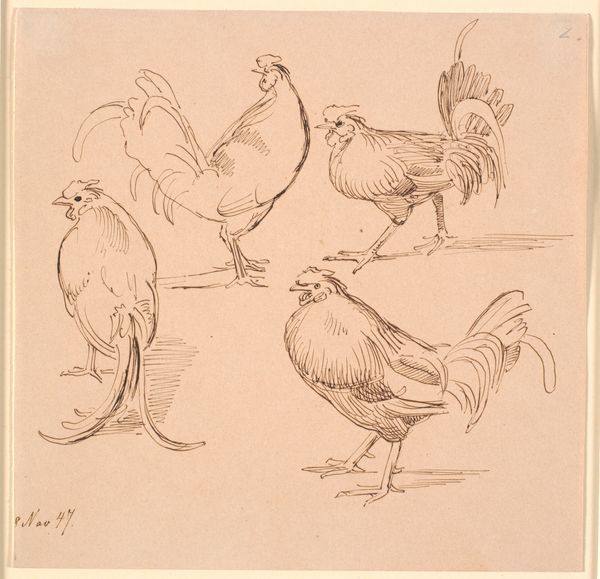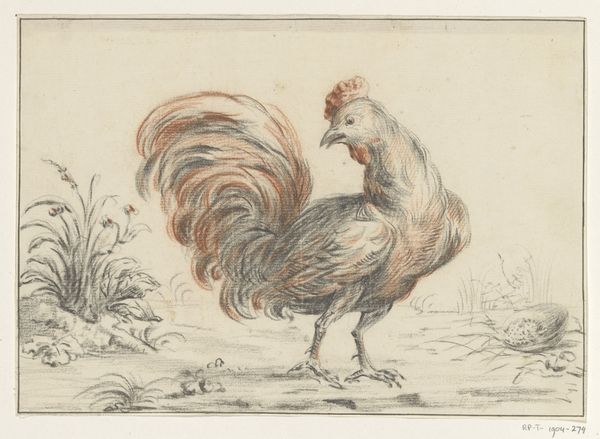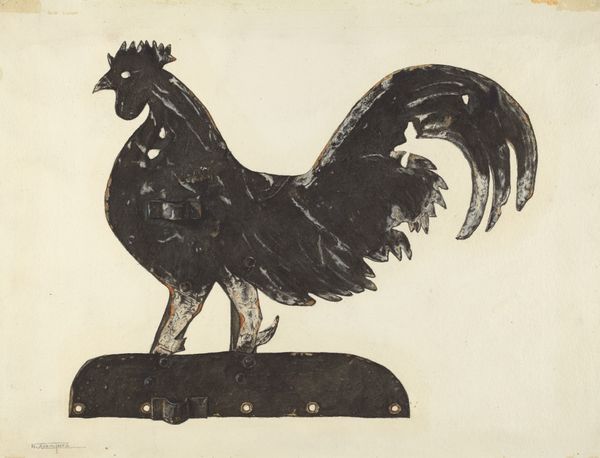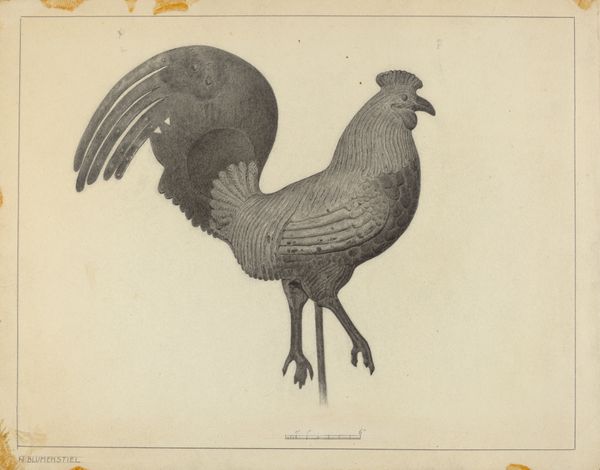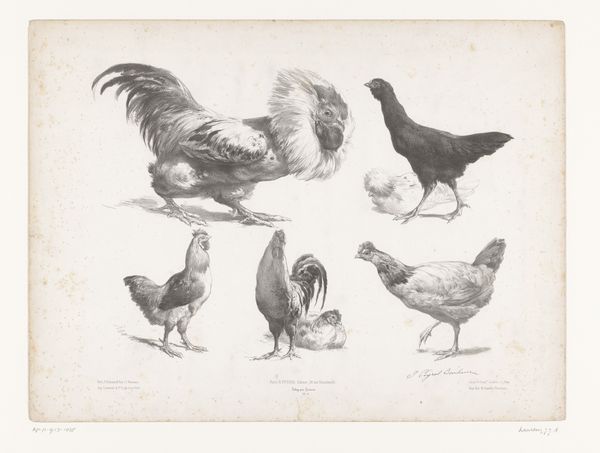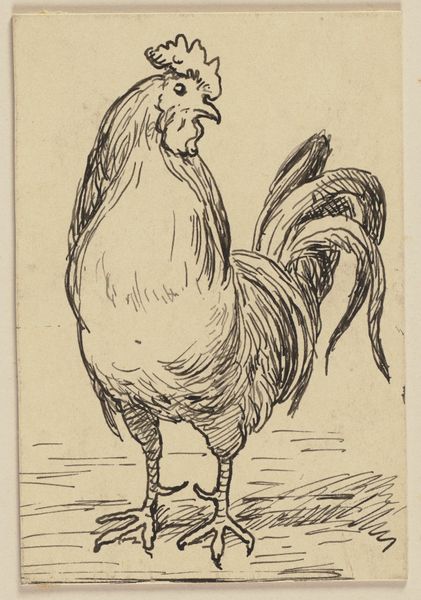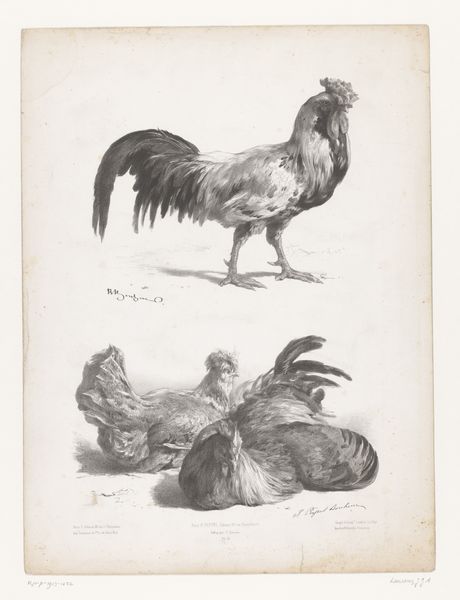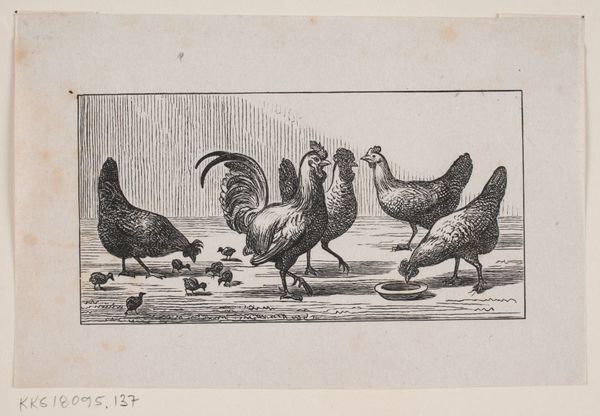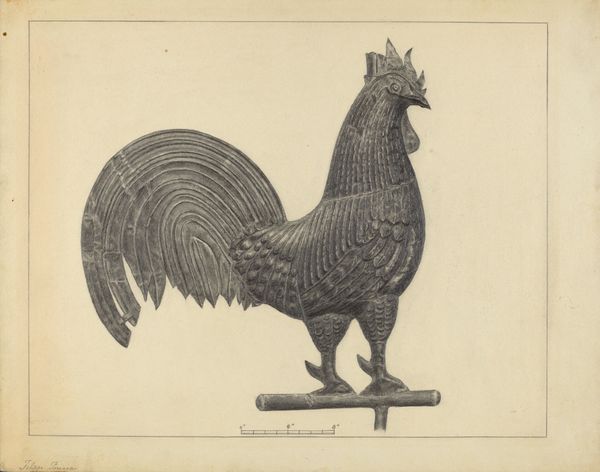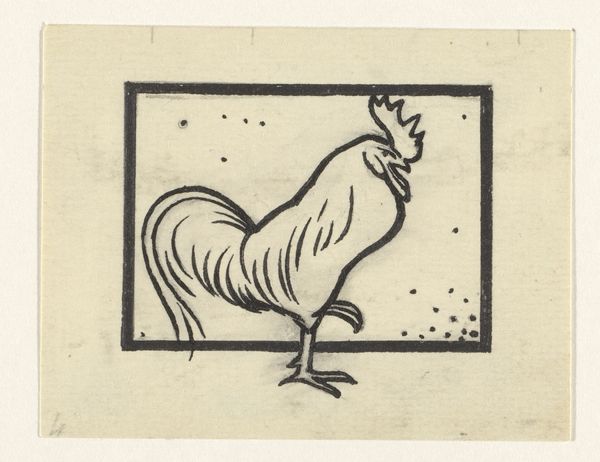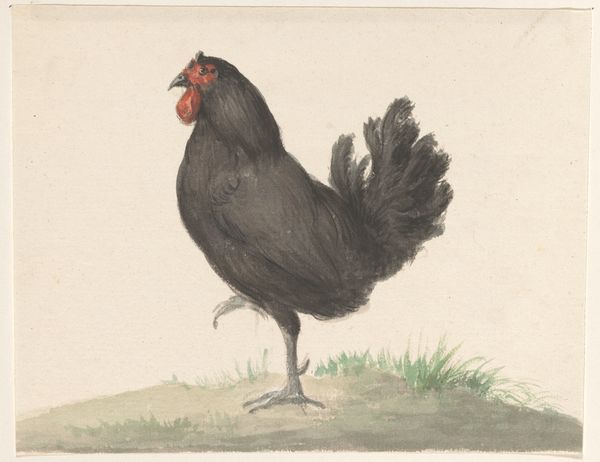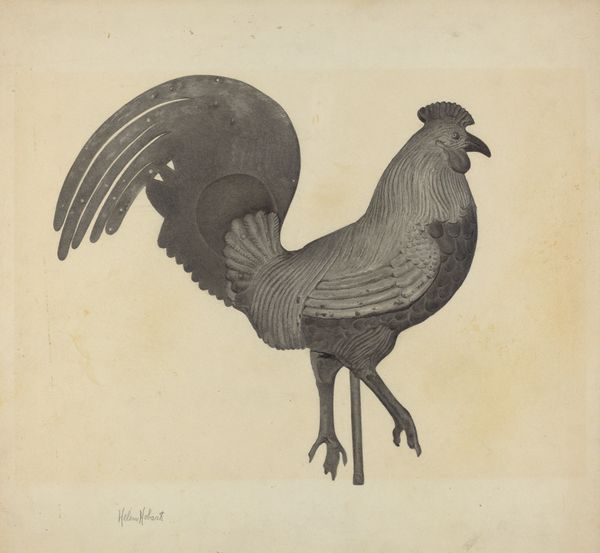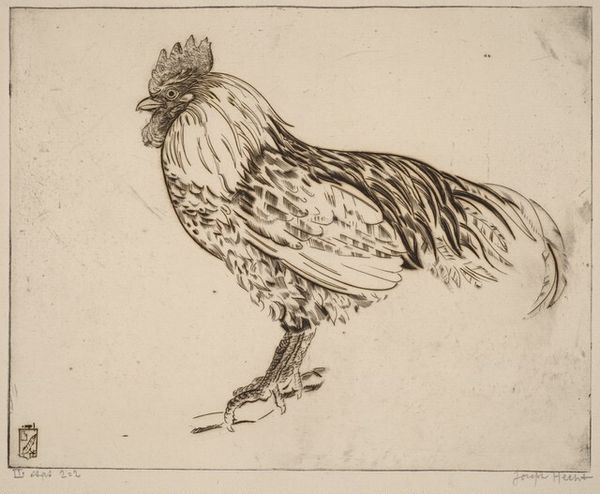
drawing, paper, ink
#
portrait
#
drawing
#
imaginative character sketch
#
quirky illustration
#
childish illustration
#
quirky sketch
#
animal
#
cartoon sketch
#
figuration
#
paper
#
personal sketchbook
#
ink
#
ink drawing experimentation
#
sketchbook drawing
#
genre-painting
#
cartoon carciture
#
sketchbook art
Dimensions: height 121 mm, width 163 mm
Copyright: Rijks Museum: Open Domain
Editor: Here we have "Hoenders" by Henri Verstijnen, created sometime between 1892 and 1940. It's an ink drawing on paper, depicting a group of chickens. I’m struck by the stark contrast between the solid black rooster and the thinly drawn hens. What's your interpretation? Curator: Well, from a materialist perspective, the contrast isn't just visual. Think about the labor embedded in each mark. The densely filled rooster speaks to a concentrated application of effort, potentially highlighting its perceived value or status within the flock. The spare lines of the hens, conversely, suggest a more perfunctory approach. Editor: That's interesting. I hadn’t considered the *application* of ink itself as conveying meaning! Do you think the artist was making a comment on labor divisions or social hierarchy within the chicken coop itself? Curator: Perhaps, or perhaps more broadly on human society projected onto these fowl. Consider where these materials come from: the ink, the paper. Were they readily available, or luxurious? Who would have consumed such imagery? A working-class audience, a bourgeois collector? These are questions that shape our understanding of the drawing's place within a larger system of production and consumption. Editor: So, the materials and the way they're used are less about the chickens themselves, and more about the society that produced and consumed the artwork? Curator: Exactly. The artist's choice of inexpensive ink and paper might reflect a commentary on the accessibility of art or a specific market they were trying to reach. Is this a quickly made study destined for mass consumption, or something intended for a discerning collector? The answer lies, in part, in the materiality of the work itself. Editor: I see. Looking at the drawing as a product of labor and a commodity shifts my perspective completely. It adds so much more depth to what I initially saw as just a simple sketch of chickens. Curator: Indeed. Analyzing the means of production helps us understand the broader context in which the art exists and functions within society. It reveals layers often hidden by purely formal analysis.
Comments
No comments
Be the first to comment and join the conversation on the ultimate creative platform.
